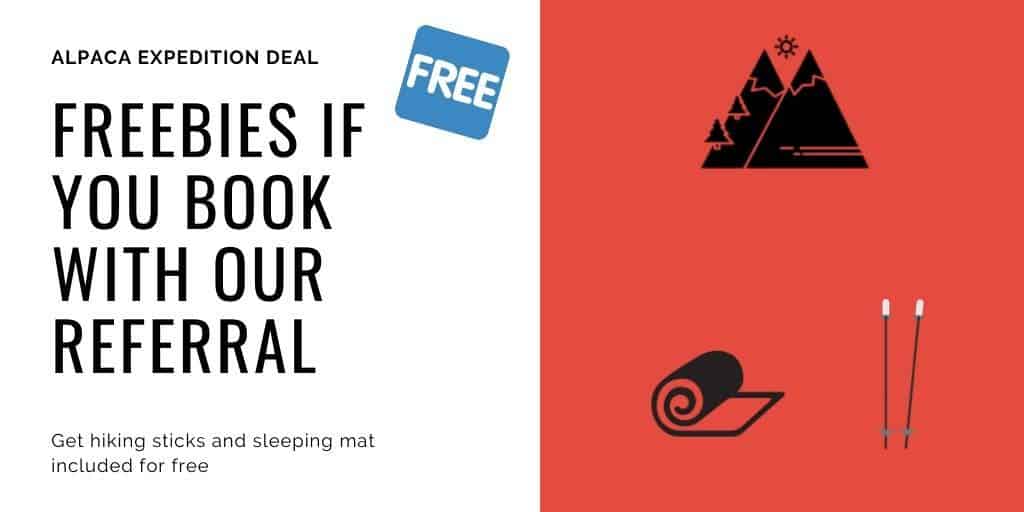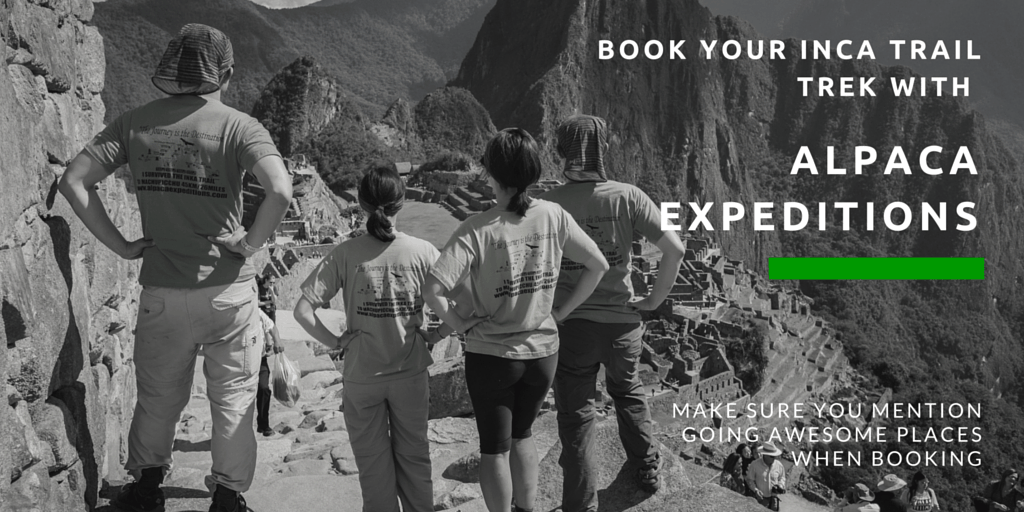I’ve done a lot of crazy things while travelling in recent years but none of that could prepare me for the physical and mental challenge that I’d have to overcome for our 4 day Inca Trail hike to Machu Picchu.
Machu Picchu as a travel destination has been on the rise since the turn of the century with more and more people going every year. With rumours swirling around reducing the number of visitors per day or closing it off entirely, it’s become on the top of a lot of people’s bucket lists including my own.
Determined to make the trip happen, we planned a mega 2 week trip to Peru that included Machu Picchu and the Amazon Rainforest. We would later find out that we had no idea what we were getting ourselves into.
Inca Trail is the only one where you literally hike into Machu Picchu through the Sun Gate
Read more about Peru
- How to pick which Machu Picchu hike to do
- Inca Trail to Machu Picchu hike guide and review of Alpaca Expeditions
- 9 surprising things I learned about trekking the Inca Trail
- Why choose trek Salkantay trek over the others
Where to stay in the Cusco?
- If you’re looking for great places to stay, my recommendation is to take a look on Booking.com. For a really comfortable luxury stay, the Palacio Del Inka was incredible for us but on a budget, we equally loved the Hostal Illapa Inn. For our one night in the Sacred Valley, the Tambo del Inka was another Marriott property that blew us away.
Table of Contents
In This Article
Picking a Machu Picchu Trail
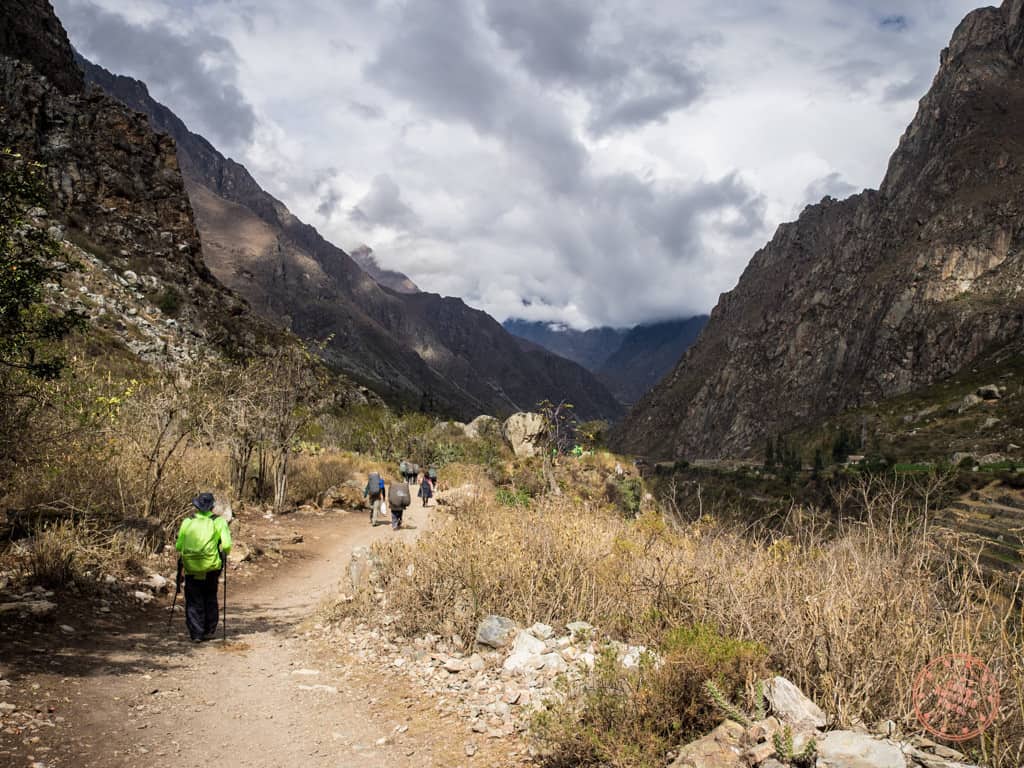
At the beginning, I was completely overwhelmed and most likely you’ll feel the same way. The ultimate goal is Machu Picchu of course but when you start researching for multi-day trek options, there are an overwhelming number of options. Which one is better? What are the differences? My Machu Picchu planning guide goes through the top choices and my Machu Picchu hike breakdown delves deeper but in the end we went with the classic Inca Trail hike. It came down to the fact that the Inca Trail is the only one where you literally hike into Machu Picchu through the Sun Gate while all other hikes end in Aguas Caliente which forces you to take the bus up with all the other tourists.
After a ton of research and back and forth, we landed with Alpaca Expeditions. I remember reading a ton of reviews and honestly, all the trekking companies were respectable and I’m sure we would’ve been fine with any one of them. While I hate to say it, TripAdvisor was the ultimate deciding factor where it came down to positive reviews, price, and the fact that they’re a local company and treat their porters and guides extremely well.
The best decision for us was booking in early March and we kind of did it blind because the only thing we knew up until that point was that we wanted to go near the beginning of September. So like a game of pin the tail on the donkey, we picked a random September day to start our 4 day Inca Trail hike.
What I Thought the Inca Trail Would Be Like
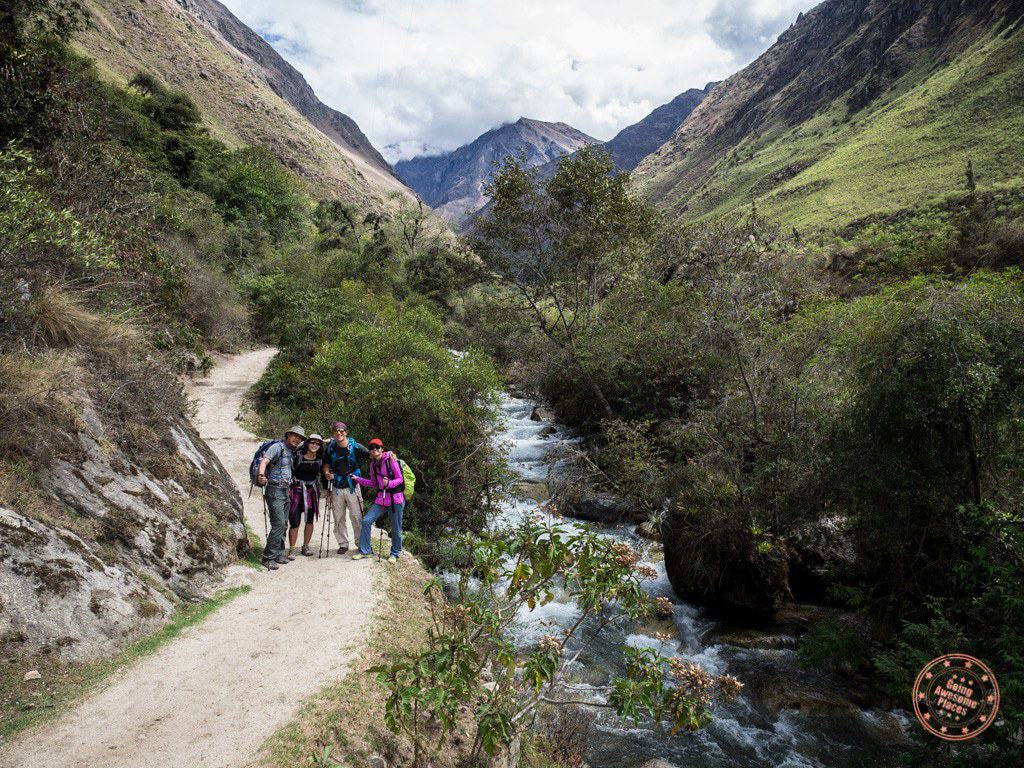
I figured that a relatively fit person like myself would have no problem with a hike like this. I hike all the time. Every summer, we head up north to hike and I’ve even gone as far as doing a pretty badass multi-day hike with camping gear and in knee-high water. Going a step further, I knew that there would be a considerable amount of uphill so I even started doing a lot of stair master and leg punishing squats leading up to the trip at the gym. I got this right? No problem!
The Inca Trail has never been pegged as a big bad hike. Everyone talks about how beautiful the views of Machu Picchu are. Sure it’s a mountain and sure it’ll have some uphill but with Diamox and a bunch of acclimatization days set in the itinerary, I didn’t think it’d be all that bad.
What The Inca Trail Was Actually Like
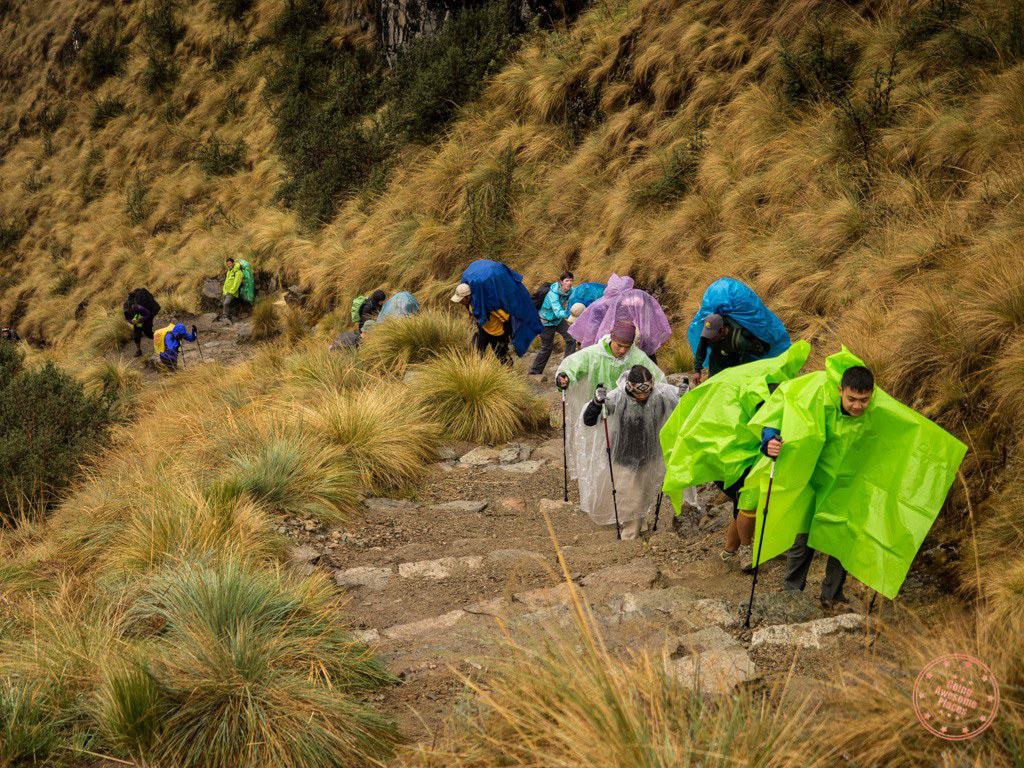
I’m not one to sugarcoat things so I want to set the record straight. The Inca Trail kicked our ass and real hard at that. Despite all of that planning and preparation, what really happened along the Inca Trail was night and day compared to what I had envisioned.
Every step I took felt like I had 20 pound bags wrapped around my leg. The unrelenting stair master from hell seemed to be on an infinite loop which pushed my lungs to the limit. Feeling like I was in post-5K marathon shape, my lungs actually felt tired, overworked and overstretched. Just imagine taking 10 steps up and being completely gassed. That’s why we took a lot of breaks along the way and why we always seemed to be one of the last groups to make camp.
Altitude
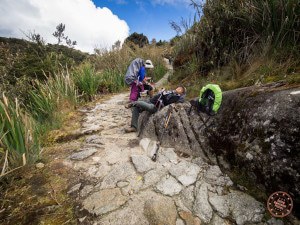
The x-factor for it all of course was the altitude and it hit us like a brick wall. At our highest point along Dead Woman’s Pass, we were pushing 4,200 meters (13,800 feet). To give a sense of scale, the peak of Whistler is 2,184 meters, airplanes cruise at 11,887 meters, and the peak of El Capitan is 2,307 meters.
All of us were afflicted by altitude throughout the Inca Trail. I had severe exhaustion after the first day and possibly a fever plus diarrhea going into day 2 and 3. My friends had similar issues but most were stomach related, inability to sleep, nausea, and vomiting. Amongst the 4 of us, we pretty much got everything in the book. To top things off, Chantelle, on day 4, as we were racing towards the Sun Gate, awkwardly stepped on a small rock jutting out from the ground and twisted her ankle.
Climate
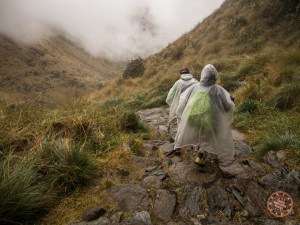
Climate was another thing that September had in store for us. While still in the dry season, September is one of those transition months for Peru, moving from winter into spring. The Andean mountain range is also known to be quite temperamental.
With how much the temperature was fluctuating it felt like we were constantly changing. On came the fleece or off it went. If it was raining, we’d have to pull out the poncho but once it let up, we stopped and put it way because it was unbreathable and just plain annoying.
There were times where it was hard to figure out what to wear because it might be cold and you’d layer up but after you started climbing, it got really hot so you’d take layers off but because of the breeze against your sweat, it’d get cold again. Catching a cold was a serious concern and could have been the cause of some of our illnesses.
The other thing that carried on with us from Cusco was the fact that it was ridiculously dry in this region. There were a couple of nights where I noticed crusted blood in my nose. The outside of my nostrils were so insanely chapped that I used my chapstick on there more than I did my lips.
Mosquitos
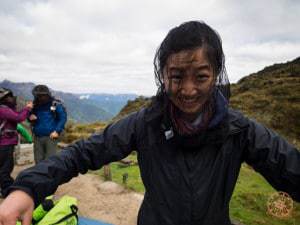
You’d think that the high altitude meant that there’d be less mosquitos. WRONG! In fact, it was the complete opposite up there and twice as vicious as the ones we have back home.
These Incan mosquitos don’t mess around. They’re small, fast, and leave big welts behind that take a long time to heal.
We woke up to day 2 with swarms of mosquitos as we prepared to head out. It was so bad that we actually had to use our mosquito head nets that we purchased for the Amazon. That only helped a bit as these little buggers still managed to get you if the net was sitting against your face. My only solution: Do the wiggle dance.
Where we got hit the hardest was on day 4 when we arrived at Machu Picchu. It was a beautiful and sunny that day. With the sun beating down on us, we naturally layered off to our shorts and t-shirts. That was a mistake. The mosquitos locked onto our bare skin like magnets. Anywhere that wasn’t protected by deet mosquito repellent was ravaged with bites.
So you see, the Inca Trail is no walk in the park.
What They Don’t Tell You
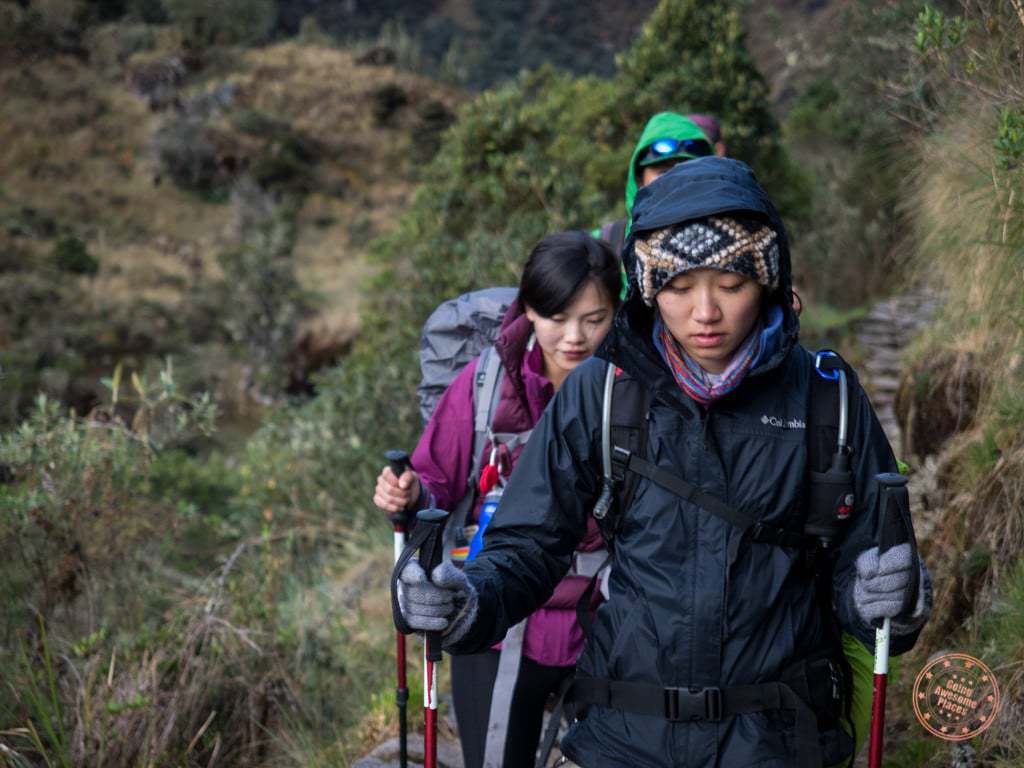
Let me break down for you everything that I wish I knew going into this. Some of it you might’ve heard of but hopefully you’ll learn something new here as well. Don’t mess with the Inca Trail.
- When you land in Cusco, you’re already at 3,400 meters (11,200 feet) so you need to tell your doctor to account for that when prescribing Diamox.
- There’s really not a whole lot of flat portions on the trek. After you pass halfway through day 1, the uphill gets more and more intense and culminates in the infamous Dead Woman’s Pass. We’re talking about 5 hours of continuous uphill where you continuously ask yourself “Is it over yet?”.
- Breathing technique is actually pretty important. Our guide, Juan Carlos, hilariously told us it’s like smoking weed. We had no reference for that so we learned that it’s about taking deep breaths in and breathing out in one quick blast. Rapid breathing doesn’t do you any good as I learned after day 1.
- Altitude not only affects the breathing but pretty much your entire body. What we learned was that even things like digesting food becomes a difficult. They tried to build in extra break time after meals but you definitely still notice feeling sluggish for awhile.
- Don’t push yourself too hard. Needing to push the pace towards the end of the first day because we were falling behind, I cut my breaks down and went all out. I was leading the pack but by the end of the night, I found myself on the verge of collapse. Cut out the heroics and go with a casual pace.
- I don’t know how you can do a hike like this without a hydration backpack like a Geigerrig or Camelback. Another key to success for the hike is making sure you’re sipping water almost all the time. Our guide told us that the best indication of hydration is whether your lips are moist or not. There were good stretches of the hike where I just had the hydration tube in my mouth and I was just constantly drinking small drops of water.
- You should pretty much go into the hike and in fact all of Cusco with the knowledge that you’re going to have some sort of stomach problems along the way. Pack accordingly. Even if you don’t though, the good thing is that your guide is pretty well equipped with first aid.
- This one’s a bit obvious but pack as light as you can. Towards the end of our hike, all of those “nice to have” and “just in case” items were all chucked into the duffle bags for the porters. Do yourself a favour and bring as little as you possibly can.
- Bring lots and lots of toilet paper. Trust me, you’ll need it. I’ll just leave it at that.
- Beware the mosquitos. As much as deet is terrible, you need the heavy stuff to stay protected if any skin is exposed. The other way to stay protected is to wear long everything all the time.
With all that said, I’m honestly not trying to scare you guys off from doing the hike. This is how the Inca Trail affected us but we met a ton of people along the way and even in talking to folks afterwards that they were completing fine. On the other end of the spectrum we heard countless stories along the way of people being forced to bail from the trail or having to get evacuated. In the grand scheme of things, our experience was in the middle somewhere I suppose?
Couldn’t Have Done It Without The Green Machine
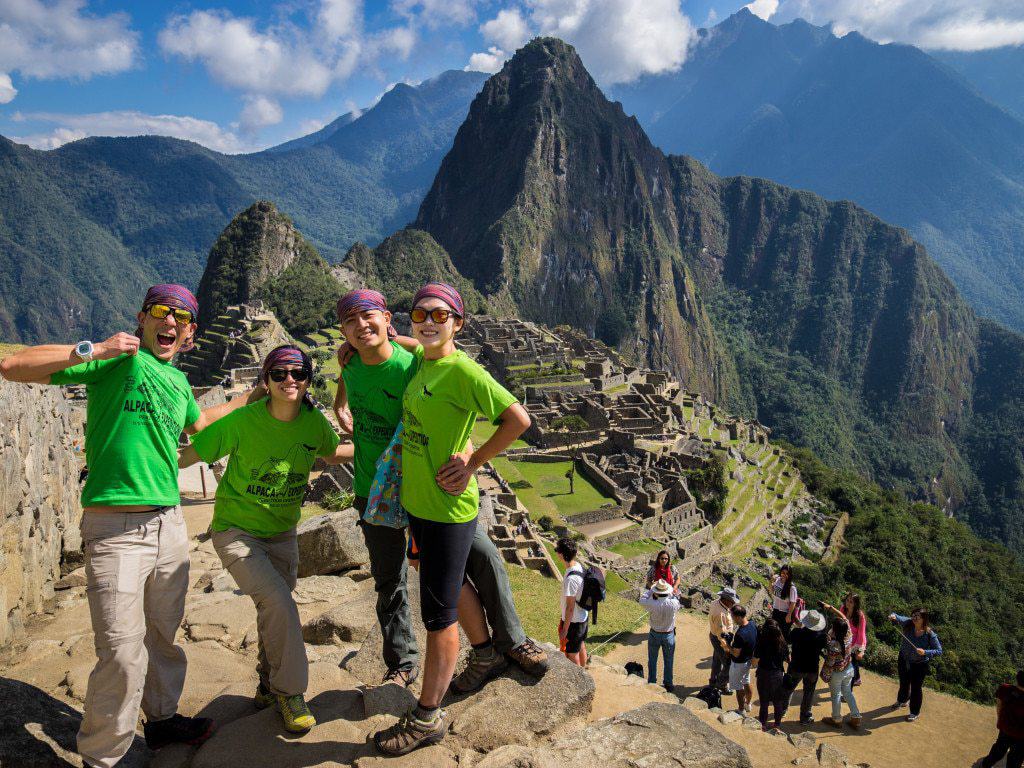
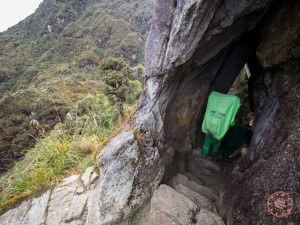
Talk about a good trekking company. We couldn’t have done this without Juan Carlos and the Alpaca Expeditions porters. It is UNREAL how good our porters were. While we were dying along the trail, our porters were strapping on 20 kg on their back and racing up and down the steps in flip flops and shoes holes in them.
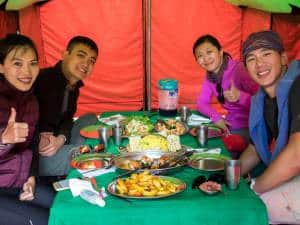
Their mountain ways didn’t end there though. We were fed like kings up there. Between breakfast, lunch, happy hour, and dinner, I don’t know if there was a day that we weren’t impressed with what we were served. Each meal was hearty and very creative considering they either had to lug all the supplies up or buy them along the way.
Lastly, camp was set up and broken down with lightning speed. Once we left for our hike in the morning, our porters would pack things up and by lunch, they were already at the camp site with the dining/cooking tent set up. They then had to pack that up to head to our night’s campsite where they put up the most comfortable tents I’ve ever used with their double sleeping mats, pillow, and plush sleeping bag.
The service was also impeccable. Every night as we settled into our tents, we’d get bowls of hot water with soap for us to wash up. In the morning, we’d wake up to piping hot cups of coca tea. The biggest surprise of course was our “Inca Shower” that we had access to on day 3 which allowed us to have a full shower by scooping out hot water from a large water cooler.
Totally Worth It
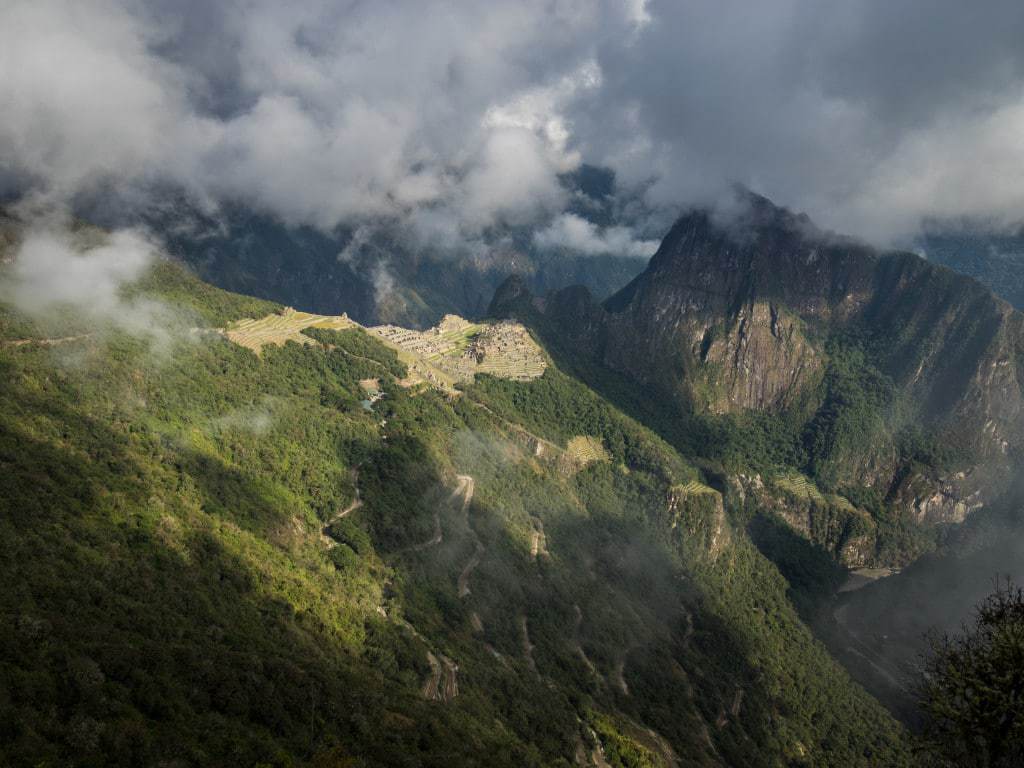
There’s something to be said about battling through adversity and coming out of it with our heads held high to the tune of one epic view. Being able to do it with your best friends made it that much more special as well. We pulled for each other every step of the way. It’s another one of those things you’ll put in the books as a “Oh damn, we actually did that.”
A lot of people have asked me if I’d do it again and the simple answer is “no” because why the heck would I want to put myself through it again. That being said, if you’ve never done it before and are up for a challenge, I highly recommend it. The Inca Trail itself in my mind is the only way to go because of the fact you come in through the Sun Gate and the numerous Inca sites that you get to see and walk through along the way. In fact, I was probably more impressed with some of the ruins we saw along the way than Machu Picchu. Might’ve been because we weren’t bumping shoulders with all the other tourists and had the sites all to ourselves.
As Switchfoot says best, “The Shadow Proves the Sunshine”.
Book with Alpaca Expeditions
I highly recommend that you book with Alpaca Expeditions. They’re best in class and would recommend them to anyone. If you want to know more, don’t hesitate to reach out to me.
Alpaca Expeditions Discount
If you’re looking to book with Alpaca Expeditions, mention that you were referred by “Going Awesome Places” and you’ll be able to get free walking sticks and sleeping pads. Also make sure to email me as well so I can resolve any issues that you may have.
How? When you fill out their booking form, their second step has a drop down for “How did you hear about Alpaca Expeditions”. Select “Going Awesome Places Blog” in the drop down.
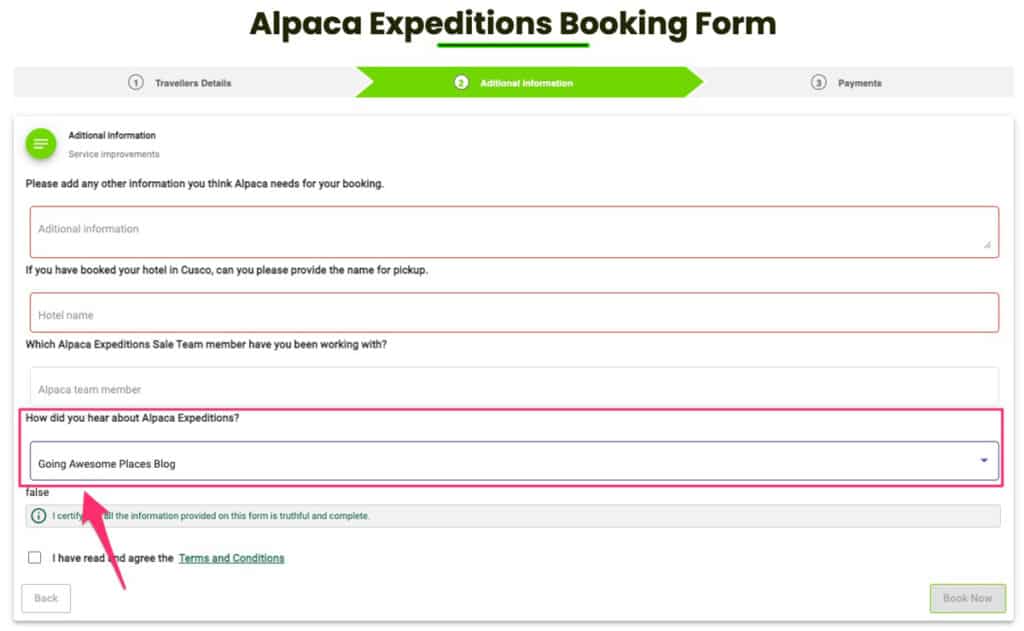
This is the best Alpaca Expeditions promotion and discount you’ll find on the market.
ALL ABOUT PERU
Where to Stay in Cusco
Acclimatization is something you kind of want to take seriously so when planning your trip around Cusco before and after your trip, make sure to book one of these accommodations in Cusco.
Below are a few of the recommended places that I personally stayed in (yes all 3) during our trip so I can vouch for all of them.
BEST
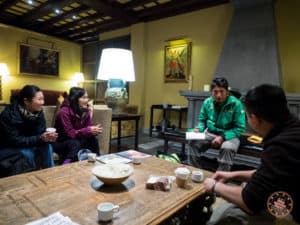
Thanks to SPG points, we were able to stay here the night before our trek. We met Juan Carlos in the lobby for our pre-hike meeting and were treated with upscale rooms as you’d expect as this is part of SPG’s luxury collection.
MID-RANGE

We stayed here after we returned from the Inca Trail and we were so glad to have this place because we really needed a place to rest with all of us recovering from some sort of ailment. This loft-style hotel was perfect for us as two couple with each of us with our own floor.
BUDGET
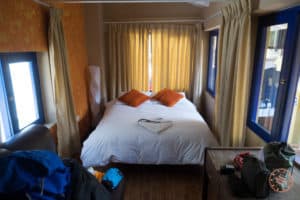
We stayed here our first two nights and for a guest house/hostel I was really impressed. Extremely clean, spacious, and really should be classified as a hotel. Came with breakfast and they were also nice enough to hold our bags while we were in the Sacred Valley.
What you should read next
